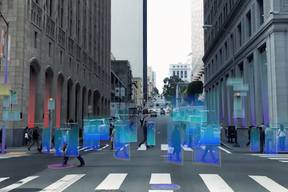Phantom Braking: What new imaging radar means for your next car
Your next car may have object-detection superpowers that fight phantom braking

Article content
Safety sells cars. That’s why today’s new car shopper is presented with a wider-than-ever array of technology and systems that intend to give them better information about their surroundings, help them react more quickly to hazards, and even prevent certain types of collisions with no driver input.
Advertisement
Article content
After reading the owner’s manual of your new car or truck, you’ll understand how these safety systems work, respond, and operate relative to the specific vehicle you’re driving. You’ll also learn about the limitations of systems like Pre-Collision Braking, Blind Spot Monitoring, Lane Departure mitigation, and more.
Systems like these draw on information generated by a vehicle’s radar and camera systems. In most situations, these safety features work reliably, consistently, and could save your life.

Still, in certain situations, the systems get something wrong. This can cause an alarming and hazardous phenomenon called phantom braking — basically a safety system false alarm that may cause your vehicle to slam on its brakes without warning, as a result of detecting a phantom object. The false alarms that lead to phantom braking are the result of sensor failure, and they reveal some of the shortcomings of currently-available safety technology.
Advertisement
Article content
Bad weather and certain types of nearby infrastructure can contribute to false alarms and phantom braking. Railway crossings, manhole covers, low-hanging street lights, and even improperly-functioning lighting on nearby cars can all trigger false alarms and phantom braking events.
According to Arbe, phantom braking is one of the more troubling experiences reported by drivers. Founded in 2015 by a team of radar specialists and data scientists, the company develops high-resolution radar imaging solutions that can help automotive safety systems perform better, and more consistently, in more conditions.
Advertisement
Article content
Another main benefit of ultra high-resolution imaging radar? False alarms and phantom braking are effectively reduced to zero.
It’s easier for drivers to drive safely when they have quality information about their surroundings. Similarly, advanced safety features can perform better and function more reliably when they’ve got higher-quality information about the world around them.
By utilizing imaging radar technology and advanced processing, Arbe’s imaging radar tech helps generate a ‘free-space’ map that the vehicle can use to more precisely detect and track objects in its path — even in total darkness, at varying elevations, and in other challenging conditions.

For instance, typical radar systems may struggle to properly identify objects passing under a bridge or overhead signage, and may confuse a vehicle that’s turning off up the road with a vehicle that’s stopped. These are two common causes of phantom braking that are eliminated with the use of imaging radar technology, and specifically, its ability to map out and analyze the nearby driving environment with higher-than-ever precision.
Advertisement
Article content
By combining information from ultra high-resolution imaging radar with further information from the vehicle’s camera feed, safety systems can be enhanced and improved. This high-tech radar solution can even identify nearby vehicles by size, differentiating between a motorcycle and transport truck, for instance.
Imaging radar technology also reduces the time required by standard radar systems to analyze and clear false-alarm situations, which improves safety system reaction time and reduces risk.

At this writing, Arbe has partnered with AutoX, who will use imaging radar technology in 400,000 Level 4 Autonomous Vehicles. Globally, some 30 OEM’s and Tier 1 suppliers are developing radar systems based on Arbe’s technology, which can also be found in commercial and aerial vehicles.
As advanced imaging technologies continue to develop, shoppers can expect to see more widespread availability of high-performing safety systems and enhanced functionalities come to market.


